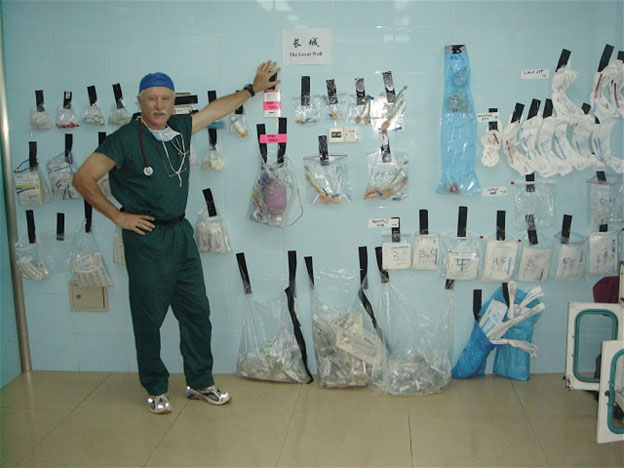By Ana Crawford, MD, MSc, FASA
The World Health Organization defines health as “a state of complete physical, mental and social well-being and not merely the absence of disease or infirmity”. The CSA Committee on Global Health works to celebrate the volunteerism, philanthropy, and global health impact of CSA members, both locally and internationally. The committee would like to take this opportunity to highlight the accomplishments of Dr. Fred Mihm, a Professor of Anesthesiology and Critical Care Medicine at Stanford University.
If you would like to be featured or to nominate a colleague, please email Dr. Ana Maria Crawford, CSA Global Health Committee Chair, at anacrawford@stanford.edu.
An Interview with Dr. Fred Mihm
Where did you grow up?
I grew up in the United States, in the New York suburbs, then northern New Jersey, then just outside Boston until I went off to college.
Do you think your upbringing influenced you becoming involved in global health? If so, how?
I was brought up to demonstrate the ”love your neighbor” directive in tangible ways and to be generous with time and talent. My ”neighbor” always had a global connotation to me. I also knew many who had devoted their lives to sacrifice and service in many low resource countries of the world.

How do you define Global Health (GH)?
To care, to teach, to equip – I embrace all three aspects of Global Health engagement in an attempt to improve health care and the health care system in low resource countries. Involvement in global health helps me recognize that I am part of a global community and to consider healthcare not just in the confines of the affluent country that I live.
What do you consider as your first Global Health experience?
My first Global Health experience was in 1977 with a surgical team repairing cleft lip and palate defects in Ecuador. Although short term surgical teams have lost their luster among Global Health pundits, I found this trip deeply rewarding, given that we changed the trajectory of a number of lives. Children with unrepaired cleft lips are social outcasts. Children with cleft palates cannot swallow food. So, the surgery is life-saving. Even in my first surgical trip, there was always an emphasis on teaching, both in the OR, and with evening lecture sessions that were packed with local doctors, students, residents from the local medical school.

What are recent examples of your GH engagement?
Since I am an active member of our Regional Anesthesia division and Regional Anesthesia is in high demand in low resource countries, I have been going on orthopedic and hand surgery trips, where opportunities to teach regional anesthesia abound. This is an aspect of anesthesia where the opportunity to demonstrate blocks on patients is VERY valuable as a teaching tool. I have also enjoyed purely teaching missions and was recently in Guyana with the Canadian Anesthesiologists’ Society International Education Foundation as an instructor, along with one of our chief residents in an indigenous anesthesia training program.
What GH initiative or project are you most proud of accomplishing?
Over the years, I have gone on 50 Global Health trips, which equates to over 2 years of activity. I have made a point to bring a trainee to mentor, for a total of 32 trainees including residents and fellows. For myself, I feel that I have gained perspective on life and healthcare in other cultures and countries.

How can Global Health evolve over an Anesthesiologist’s career from residency to retirement?
I think one becomes more aware and able to embrace local culture, more effective with high impact teaching methods and more able to identify the needs of local physicians, for example, what they want to be taught and what teaching is appropriate, given the context and facilities available.
What has been your most challenging or surprising lesson learned in Global Health?
The equipping or capacity building piece of Global Health is by far the most challenging, and some would say, the most needed. I have witnessed failed attempts at upgrading Anesthesia department facilities with generous donations of expensive airway equipment, ultrasound machines, ventilators; all failed attempts because of lack of equipment maintenance. In several local cultures the word ‘maintenance’ is an unknown concept and word. Many places face an inability to pay for repairs, no pathway for getting in-country repairs, ventilators designed to be powered by oxygen in a hospital that routinely ran out of oxygen, and other significant barriers. While it is very trendy to engage in capacity building, it’s clear to me that we need to do our homework in order to make lasting, viable improvements.

What would you like to share with others regarding the value of Global Health engagement?
I believe as physicians we need to advocate for healthcare for all patients, everywhere. It’s all too easy to live in our affluent medical cocoon and ignore the real disparities in healthcare in the rest of our own country and the world. As someone has suggested, there is a kind of ‘reverse entitlement’ that drives me to be involved in Global Health. I feel I have been given much and have a responsibility to repay or pay it forward in some significant way.
